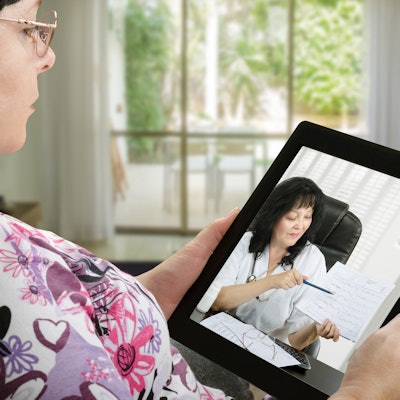
Offering patients online scheduling for screening mammography exams seems like a great idea, but the option may in fact exacerbate healthcare disparities, according to a study published April 14 in the Journal of the American College of Radiology.
The findings underscore the continued need to address the problem of healthcare inequity, wrote a team led by Dr. Patricia Balthazar of Emory University in Atlanta.
"Although online portals can empower patients to take charge of their own health records, institutions should recognize that online scheduling may disenfranchise a large number of patients, and multiple solutions (as well as outreach and societal improvements in technology access) will be necessary before traditional methods of scheduling can be eliminated," the group wrote.
Use of computers and mobile devices can boost patient access to electronic health records and doctors, and help patients schedule appointments, the team noted. But not all patients have internet access.
"Health informatics interventions are prone to inadvertently exacerbating existing health inequities by disproportionally benefiting already privileged populations and digitally connected individuals," the group explained.
Balthazar's team explored whether sociodemographic factors impacted patient use of an online portal for self-scheduling screening mammography and compared uptake of this option to traditional scheduling via phone. The study included data from 46,083 women who underwent screening mammography between January and December 2019.
The authors tracked the pathway patients used to schedule the exam, and their age, language, race/ethnicity, health insurance status, and zip code (this last was linked to census data and used to determine internet access, median household income, and education level).
Self-scheduling via the online portal was rare, the team found: Only 0.7% of the study cohort scheduled mammography screening this way. Those who did tended to be younger, English speakers, white, and to have commercial insurance.
| Sociodemographic factors that affected online mammography scheduling | ||
| Variable (p-value) | Traditional scheduling | Online scheduling |
| Age (< 0.001) | 60 (average) | 53 (average) |
| English as preferred language (< 0.001) | 92.3% | 99.7% |
| Race/ethnicity (0.0043) | ||
| Asian | 5.8% | 3.6% |
| Black | 4.8% | 2.3% |
| Latinx | 2.2% | 0% |
| White | 8.9% | 88.4% |
| Insurance (< 0.001) | ||
| Commercial | 63.6% | 84.4% |
| Medicare | 28.8% | 10.9% |
| Medicaid | 6.8% | 4.3% |
So what does the study suggest? Healthcare disparities exist -- and more work must be done to address them, according to the authors.
"These results underscore ... the contribution of health IT and digital health interventions in widening the digital divide," they concluded. "Without strategic implementation, intentionally designed to be inclusive of all patients, digital health interventions can become an additional barrier to care and lead to intervention-generated inequities."



















